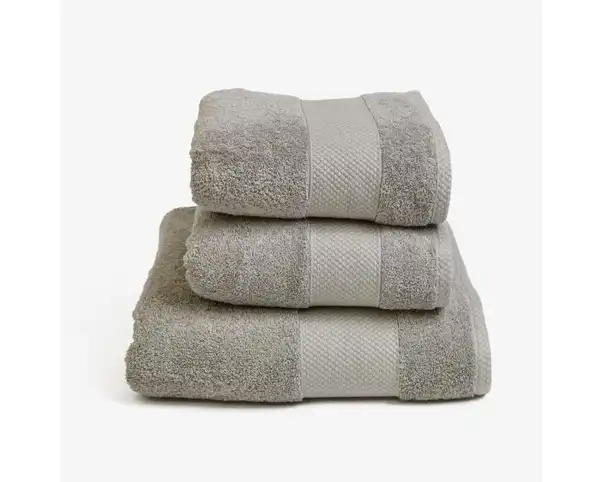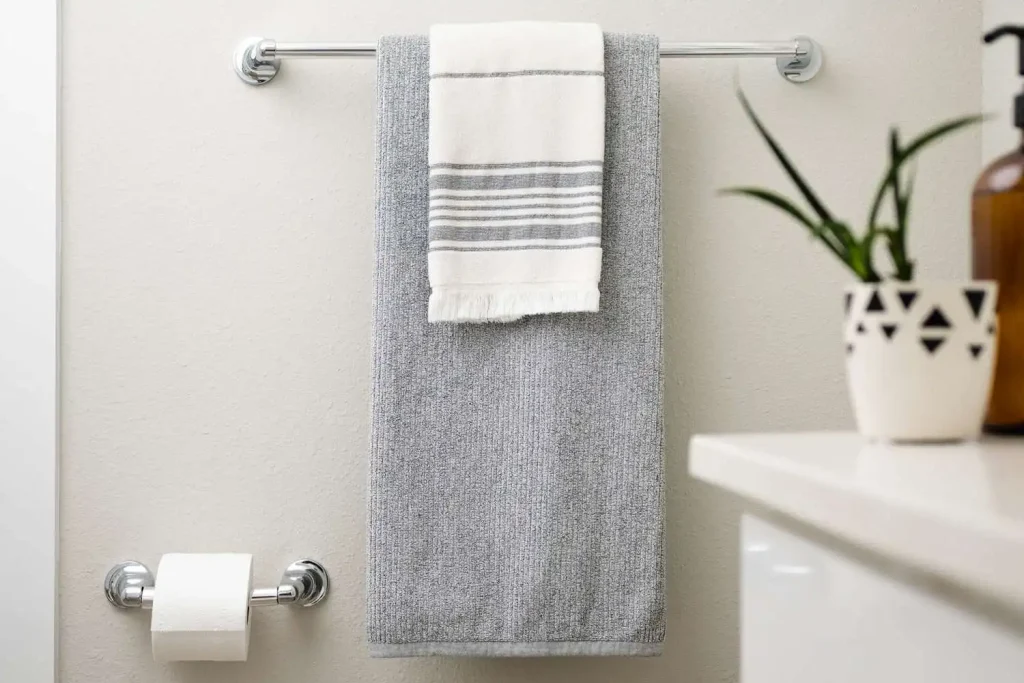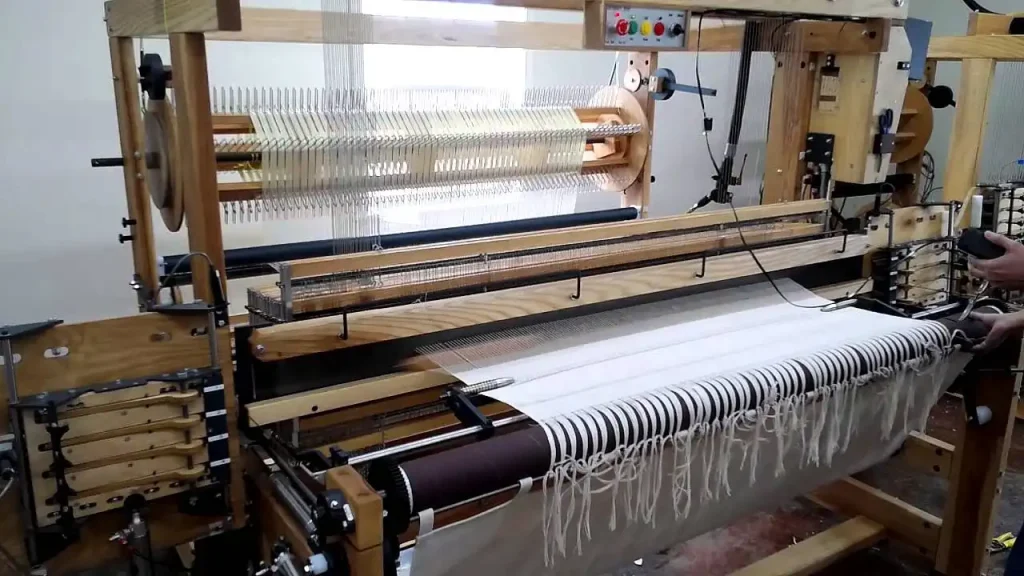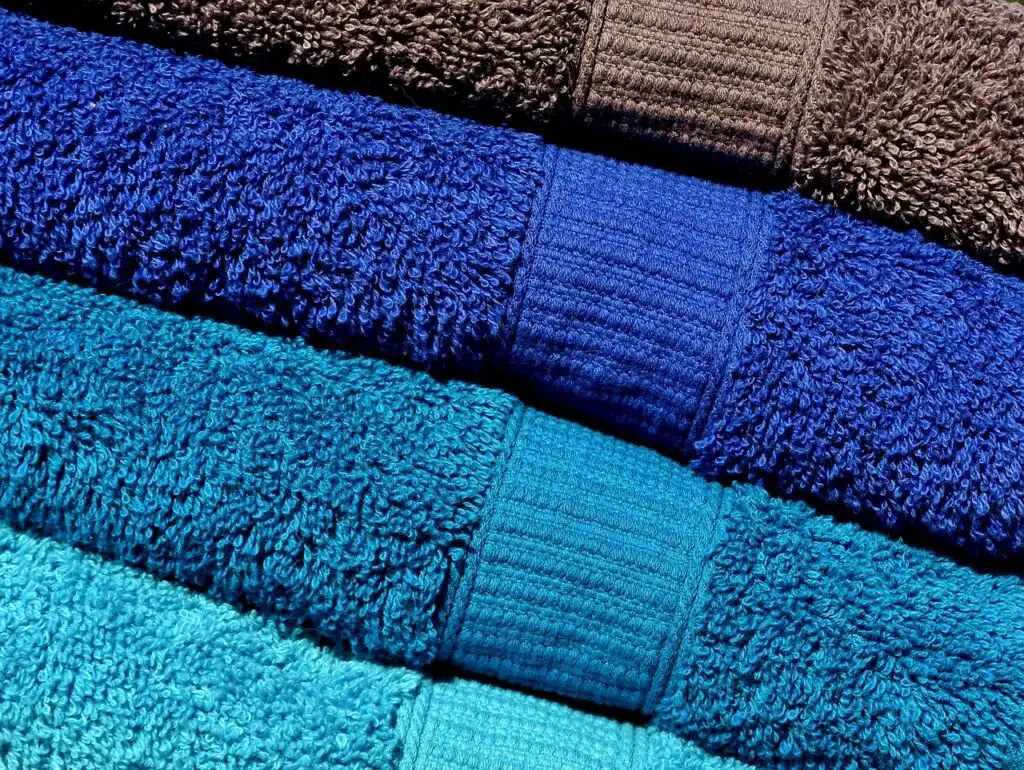When you grab a bath towel, you might notice a woven strip at both ends and wonder why it’s there. Is it just a design choice, or does it serve a purpose? Let’s dive into the fascinating world of bath towels and discover the secret behind those bands.

The Handy Hanging Loop: A Clever Addition
The woven strip found at the ends of most bath towels is more than just a decoration. It serves a practical purpose – it’s a hanging loop! This loop allows you to easily hang your towel on a hook, keeping it within arm’s reach and allowing it to air dry after use. No more soggy towels left on the bathroom floor!

Imagine a towel without this nifty loop. You’d have to fold it over a rod or drape it on a hook, and it might not dry as quickly. The hanging loop is a simple yet ingenious addition that makes your towel more convenient to use and maintain.
CAM or Dobby Towels: Unveiling the Weaving Techniques
Now, let’s explore the weaving techniques used in towels, such as CAM or Dobby. A CAM or Dobby towel is a type of towel with a specific weaving pattern that creates raised, textured designs on the fabric. This isn’t just for aesthetics; it enhances the towel’s functionality.

The raised patterns created by CAM or Dobby weaving increase the surface area of the towel, making it more absorbent. These textured areas trap more moisture than a flat surface, ensuring you dry off more effectively after bathing or swimming. So, those bands on your towel aren’t just for looks – they play a crucial role in enhancing performance.
Ridges on Towels: The Science Behind Absorption
Have you ever wondered why towels aren’t entirely flat? The answer lies in science. Towels are designed with ridges and textures to maximise their absorption capabilities. The ridges create additional spaces for water to be trapped, allowing the towel to absorb more moisture efficiently.

These ridges aren’t random; they are strategically designed to increase the towel’s surface area. The more surface area a towel has, the more water it can capture. Appreciate the science behind those ridges next time you use your towel – they’re there to ensure you stay dry and comfortable.
The Not-So-Fluffy Strip: Debunking Myths
You might have encountered various theories about the not-so-fluffy strip on bath towels. Some say it’s for decoration, while others speculate it’s a manufacturing quirk. A common misconception is that it’s an area with less fluffiness, but the truth is quite different.

As explained earlier, the strip is part of the weaving pattern and serves functional purposes. It’s not a design flaw or a result of subpar manufacturing. The next time someone wonders about the purpose of that strip, you can enlighten them with the knowledge of hanging loops and textured patterns.
In Conclusion: Towel Bands are More Than Meets the Eye
So, the next time you wrap yourself in a bath towel, take a moment to appreciate the clever design choices. The hanging loop ensures your towel stays tidy and dries efficiently while the weaving patterns enhance its absorbency. These simple features make your towel a reliable companion in your daily routine.
Now you know the secret behind those bands on bath towels – they’re not just there for show; they’re functional and play a crucial role in making your towels more practical and absorbent.
For more interesting articles, please visit www.kidzherald.com





